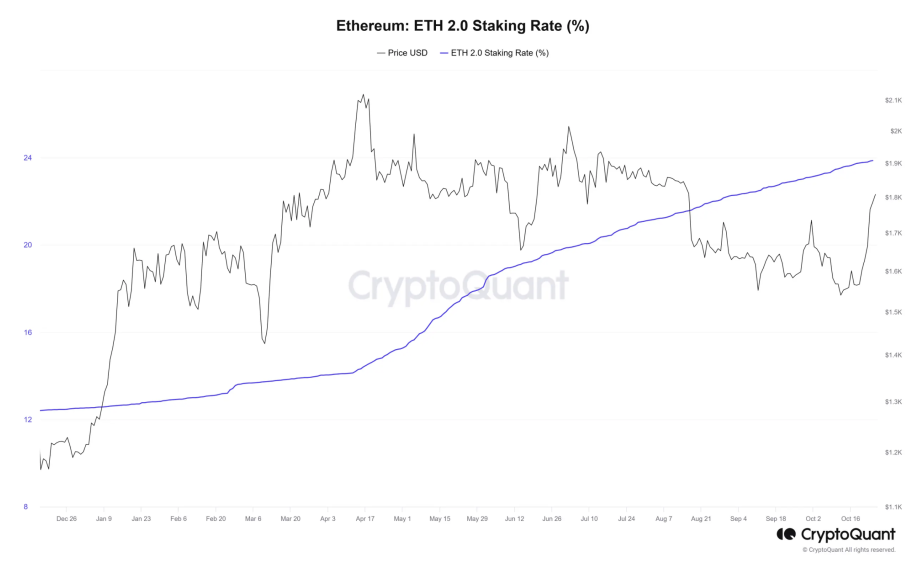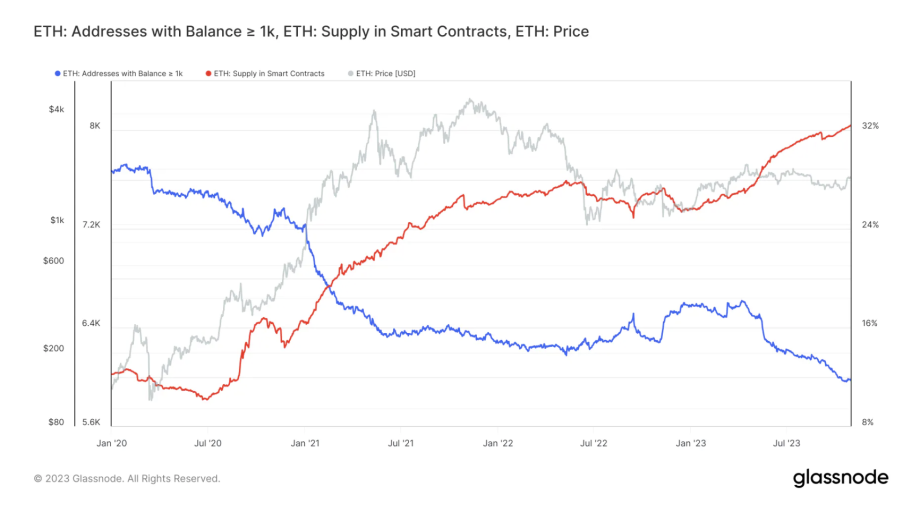A chart from Glassnode heated up tempers in the crypto space last month. Accordingly, Ethereum whales have sold their coins massively in recent years. But the question remains: where do the stocks go?
Staking Rate: Uptrend continues
Meanwhile, there is an increase in Ethereum’s staking rate. It reached a new all-time high of almost 24 percent in October.

This development correlates noticeably strongly with the apparent decline in the holdings of large ETH investors. As more and more coins leave the exchanges and supposedly the whales’ wallets, more and more Ether are being staked – an indication of their actual intention. They may choose strategic alternatives such as staking to diversify their holdings while benefiting from the associated returns.
The unrecorded proportion of staked ETH by Glassnode’s whale indicator makes the picture clear: it is not a sale, but a targeted reallocation of assets.


The whales’ Ether flow into the Ethereum ecosystem, where they are used in smart contracts from DeFi protocols or staking providers such as Lido Finance. Data from Santiment also shows that Ethereum billionaires who hold 1,000,000 ETH or more own about 32.3 percent of the total amount of Ether in circulation. For comparison: a year ago this value was 29 percent. The rate continued to increase in October.
How to interpret the behavior of major Ethereum investors and what investors need to know about it now you can find out in the new BTC-ECHO Ethereum Report.
This might also interest you